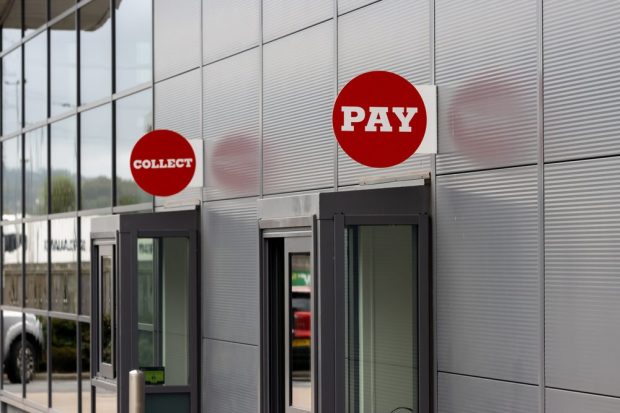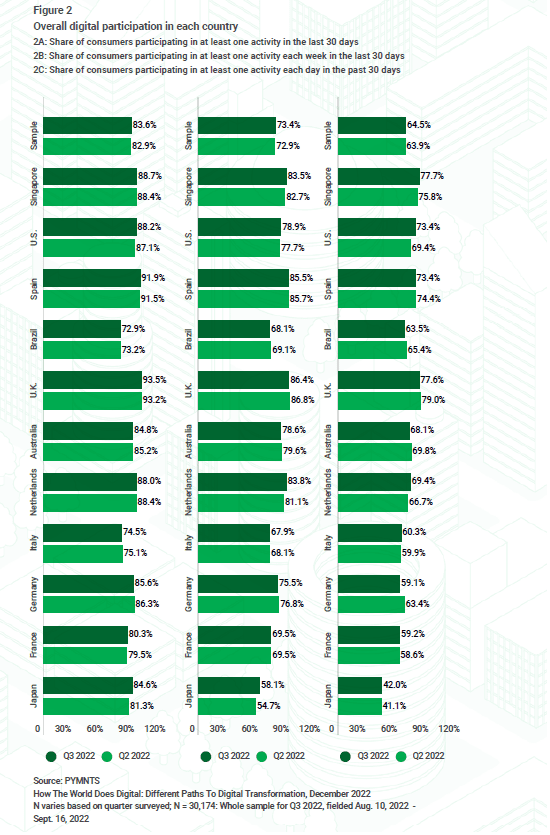UK Open Banking Use Boosted by Consumers’ Embrace of the Digital Economy

Increased British adoption of open banking this year may be making headlines after the announcement of a new regulator focusing on the space — but this surge may have been made possible by the country’s high digital engagement.
Surveying more than 30,000 consumers across 11 countries, PYMNTS’ December ConnectedEconomy™ Index, “How the World Does Digital,” is a broad, comprehensive look at the current state of global digital transformation into day-to-day activities. The U.K.’s steep engagement trajectory has been an important marker in the index’s analysis, especially when it comes to comparing Europe’s transformation rates.
December’s edition of the index focused on digital activity rates within 2022’s third quarter. Across nearly all countries tracked, overall engagement steadily increased during that time period, with 65% of consumers globally participating in at least one online activity daily in 30 days previous to being surveyed. Notably, engagement in routine activities such as music streaming, ridesharing app use and streaming health-related media all rose. The steady increase in these routine activities that have measured suggests that consumers’ integration of online tools and other technology will continue to rise for the foreseeable future.
The U.K. boasts the highest engagement in monthly and weekly activities across all countries the Index tracks. It also comes in a photo-finish second next to Singapore when it comes to the share of consumers participating in digital activities daily within the 30 days prior to being surveyed.

The U.K.’s high digital engagement may have played a part in the open banking phenomenon now taking hold of the country. This practice, involving banks’ sharing of consumer data with approved third parties to create a more open financial ecosystem, took five years to be embraced by U.K. consumers. Although there was some consumer interest after the 2017 Competition and Markets Authority (CMA) report release on competition within retail banking, adoption has only surged in recent months, following the announcement of a new regulator appointed to oversee and boost these efforts. Some experts believe that additional factors have influenced the initial slow adoption of open banking by consumers. These include the proliferation of digital tools already offered by the country’s financial institutions as well as the lingering popularity of paper checks and physical cards.
U.K. oversight committees published their vision for the next stage in open banking late last year and convened a working group to assess different stakeholder views. By January, the CMA released a statement saying six of the country’s nine largest banks had already successfully submitted their roadmap requirements, as laid out by the Authority. Included in that group of six was HSBC, which the CMA found had previously breached its open banking order by failing to make up-to-date account information available through open banking APIs.
Despite its slow initial adoption, open banking in the U.K. boasted the addition of 1.2 million first-time customers in January. This means the total number of open banking customers across the country exceeds 7 million.
The U.K.’s high rate of engagement already in place undoubtedly is one factor behind the country’s current increasing embrace of open banking. The country’s innovative approach toward financial transparency is just one method of how each country the Index tracks is finding its own way toward a more ConnectedEconomy™.

